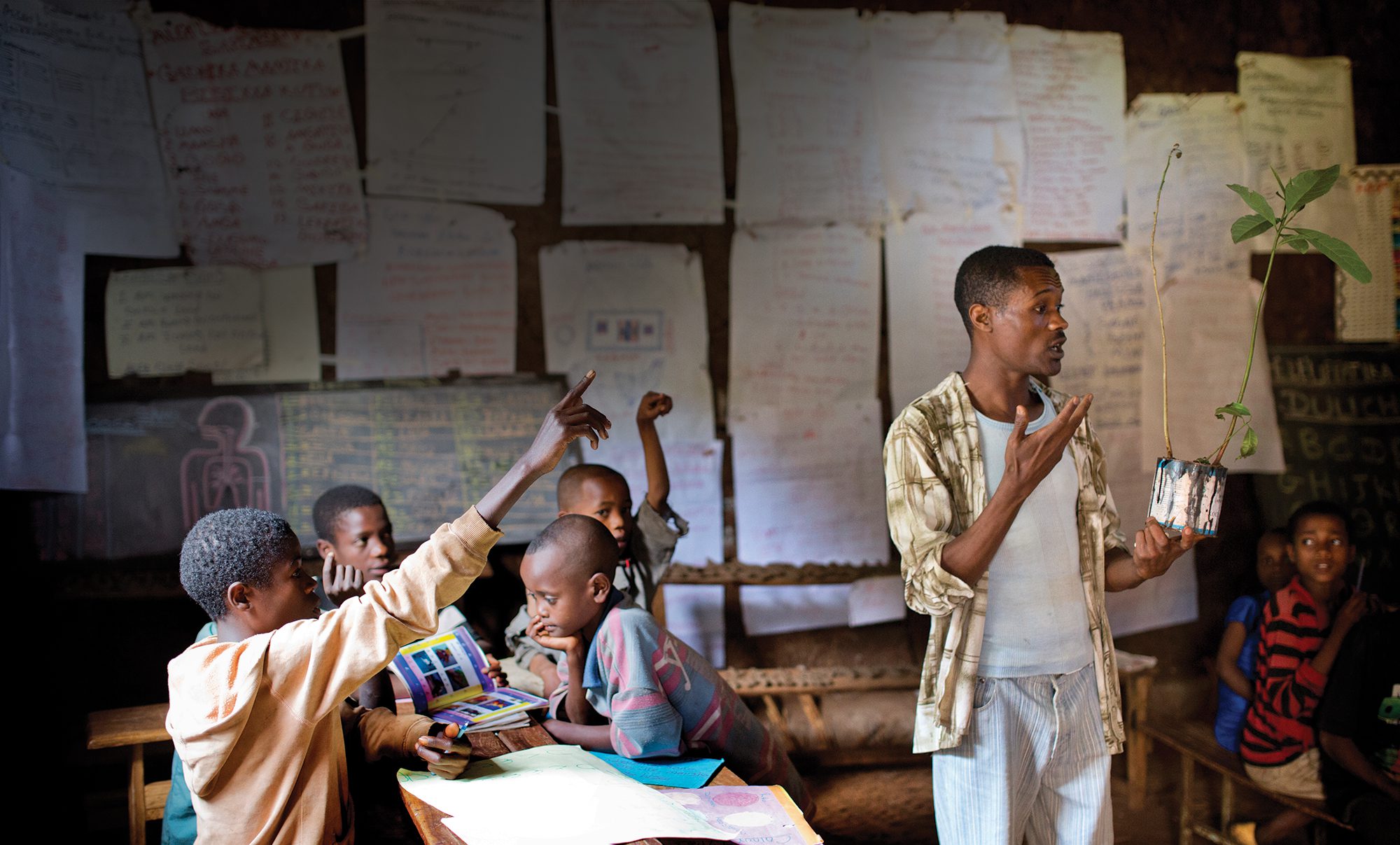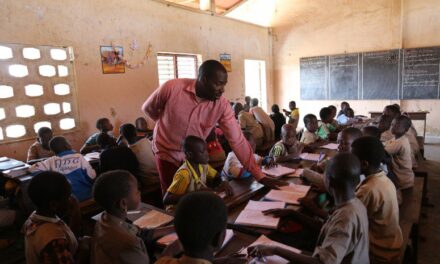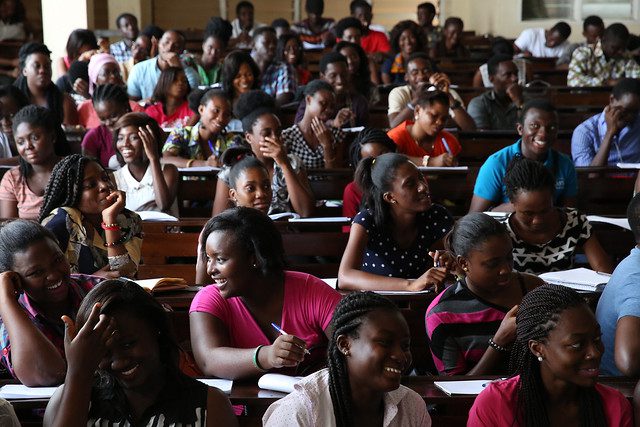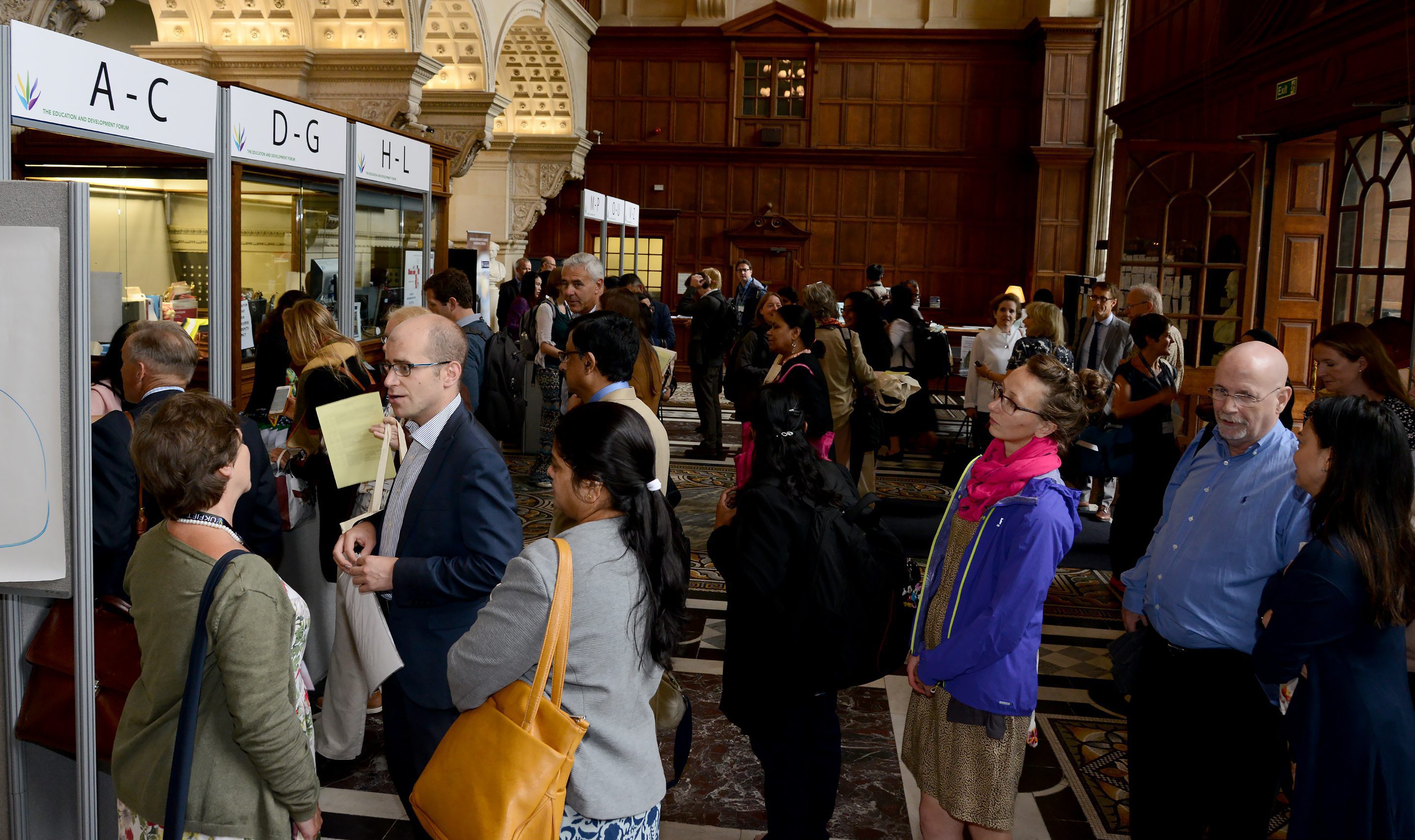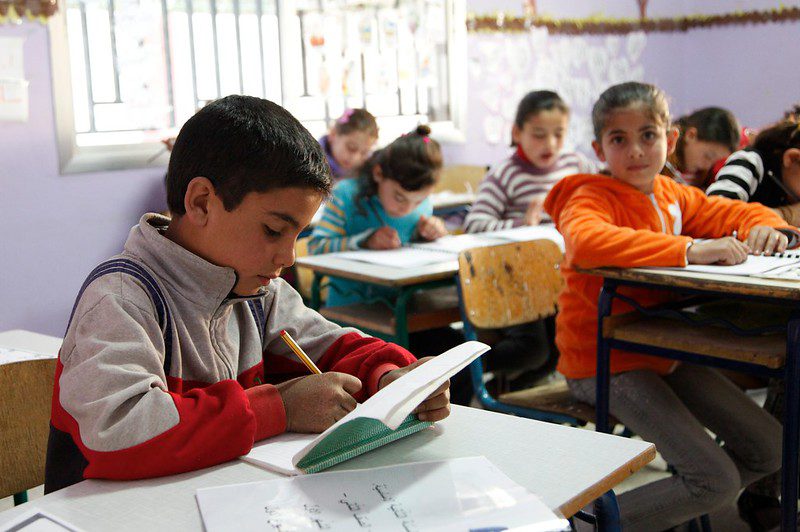This blog was written by Dr Joshua Muskin, Senior Director of Programs and Education Team Leader, Geneva Global. He will be presenting at the 2019 UKFIET conference and introduces his theme here.
UNESCO estimates there are 64 million out-of-school primary aged children worldwide. Over two million live in Ethiopia and another 700,000-plus in Uganda. Many of these excluded children are now too old to start in Grade 1 but still aspire (with their parents) to formal schooling. The Speed School program, with support from Luminos Fund and other corporate and private funders, has proven to be a highly-effective, low-cost way to provide these children a second chance.
Originating with Stromme Foundation in West Africa and expanded by Geneva Global to Ethiopia and Uganda, Speed School gives out-of-school children aged 8 to 14 the first three years of primary education in one. Featuring learner-centered, activity-based instruction delivered by para-professional instructors, the model has let more than 220,000 children in Ethiopia and Uganda (over 90% of those who enrolled) transition to government primary classes. The program includes a self-help component for mothers, raising their economic ability and motivation to support their children’s schooling until completion.
Independent studies by Mekelle University in Ethiopia and the Pincer Group in Uganda show that learners in Speed School classes perform as well as or better than pupils in conventional classrooms. A longitudinal study by University of Sussex and Hawassa University show that this excellence persists into future schooling.
As with most externally supported programs, the goal is that the host government and/or other national institutions will ensure the sustainability and scaling of Speed School after funding ends. Unlike most programs, the prospects for full government adoption of Speed School in Ethiopia and Uganda appear great.
What does “government adoption” mean?
In both countries, Geneva Global and its local civil society implementing partners are engaged intimately with government to ensure the continued operation, scale, and impacts of Speed School when the program’s funding ends. What this means practically is that government:
- Codifies the model within official education policy and plans;
- Integrates the model into formal pre-service and in-service teacher training;
- Has a dedicated line for the operation of Speed School in its annual budget with adequate funds;
- Designates sufficient staff at the respective administrative levels to manage the Speed School program;
- Trains and mandates school inspectors, headteachers, and other authorities to monitor, supervise, and support teachers to deliver the Speed School model;
- Subjects Speed School classes and all its actors to rigorous monitoring and evaluation; and
- Integrates Speed School classes formally into government primary schools and operates these wherever there is a sufficiently large group of out-of-school children.
How does a program achieve government adoption?
Geneva Global is advancing purposefully and significantly toward adoption in both countries. Most basically, this process has entailed four concrete actions:
- Validating the model
Geneva Global and its partners have created a model that doesn’t just yield reliably strong results; it does so with a level of resources and under conditions that the government will face after external support ends. Here, “model” refers not just to Speed School but also to the strategy for training and supporting teachers to deliver the program successfully.
- Making the case
The program has used many means to demonstrate that Speed School succeeds well, and the evidence comes from a variety of voices. Most objective may be the university studies referenced above, though Geneva Global also operates its own rigorous monitoring and evaluation. Perhaps most convincing are the direct contacts authorities across the system have with the Speed School instructors, parents, and learners and the teachers and headteachers who receive the children in the government classrooms.
- Moving to government implementation
Speed School adoption is not being left to a simple “turnkey” endeavor. Rather, Geneva Global is accompanying the government to establish and operate its own classes, in growing numbers, over a three to five-year period. This has two main purposes. One is to be able to fine-tune the core pedagogic and training models and methods to suit the government’s prevailing operating conditions.
- Securing institutional capacity and commitment
The other purpose is to strengthen the government’s institutional commitment and capacity to operate Speed School. Seeing may be believing, but doing can be necessary to convert belief to enduring action. Working with central, regional, and local authorities and technical agents, Geneva Global is both learning and helping the government learn-by-doing in a progressive and iterative process what is necessary to sustain and scale Speed School and secure its institutional and personal mastery of the core models and methods to achieve this.
Central to all four actions is the practice of “cocreation.” Basically, this means involving all key stakeholders—from parents and teachers to local and national authorities—in shaping the many adoption parameters. Full government adoption results when the responsible structures and actors at all levels are convinced that the innovation both serves their own priorities and does so in a way they can manage and sustain.
Cocreation fosters these conditions in two ways. One, engaging actors deeply in shaping, implementing, and adjusting the innovation leads to a comprehensive understanding and a deep commitment and sense of responsibility and authority. Two, it helps ensure that the innovation does in fact meet the government’s priorities and conform to prevailing conditions.
Along with the success of the Speed School model as a strategy for greater inclusion and quality, the still-formulating adoption story is one that Geneva Global is eager and proud to share.

